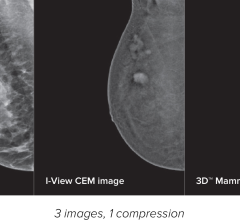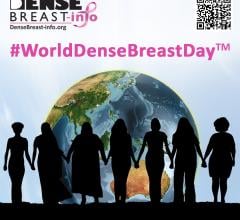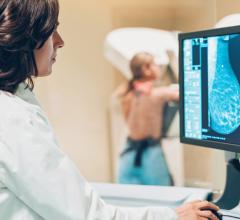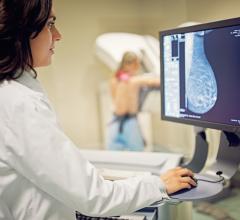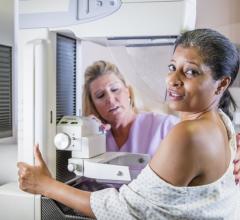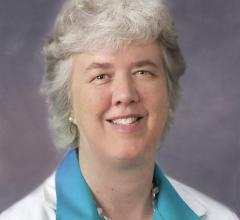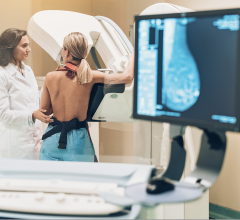Women’s imaging specialists have acknowledged it for some time, but now the American Cancer Society has issued guidelines that underscore the value of MRI breast cancer screening for high-risk women. A study in the New England Journal of Medicine suggests that when cancer is diagnosed in one breast, the other should undergo an MRI exam. As the winds of change blow through the women’s imaging world, we screen the screeners and equipment experts.
Participants:
- Olivia Ho Cheng, CEO and president, Aurora Imaging Technology
- Stephen A. Feig, M.D., F.A.C.R., professor of Radiology/ director, Division of Breast Imaging, UCI Medical Center, Orange, CA
- Nealie Hartman, clinical marketing manager, MRI Division, Siemens Medical Solutions
- David Gruen, M.D., founder, Norwalk Radiology and Mammography Center, Norwalk, CT
What will be the impact of these guidelines during the next three to five years?
Cheng: I foresee a significant and rapid increase in MRI screening exams for extremely high-risk women. Physicians and patients will need some education. But I believe that eventually, as we learn more, even women with a lower breast cancer risk will be appropriately referred for these exams.
Gruen: In the short-term, demand for exams will probably outpace capacity. Breast MRI calls for significant clinical skill and experience as well as funding for equipment. Unfortunately, this imaging specialty is not widespread enough to serve all the women who can benefit from it today.
Feig: There’s really nothing dramatically new in the guidelines. They really just summarize and give credibility to what many have known all along. Clearly, more studies are needed to fill in gray areas, particularly for women with moderate risk and even lower risk factors.
Hartman: The demand for MRI imaging will grow, and women themselves will be the drivers. Women concerned about breast cancer patients are among the most educated and technically savvy patients. We receive many calls directly from women inquiring about breast MRI. Recent press coverage galvanized many women to investigate the technology, but everything takes time.
How will insurance companies react?
Cheng: Change will take time, but eventually insurance companies will have to reimburse for screening. They will likely adhere strictly to guidelines to ensure that only women who truly qualify will be covered. However, by catching cancers earlier, screening has economic benefits for insurance companies. Studies have proven this.
Gruen: Insurance will likely continue to show resistance to screening coverage and likely judge most patients on a case by case basis as they have in the past. However, women should persevere and learn to be their own advocates. This is an important tool that will help save lives.
Feig: I believe insurance will be more liberal in coverage and tolerate some increase in exams – unless too many women who don’t really fall within these guidelines are referred. The population that falls strictly within these guidelines is not so large that they will strain the healthcare system.
Hartman: I have seen coverage of breast MRI growing and believe the trend will continue. However, prescribers need to demonstrate responsibility in determining what actually constitutes high risk. They may need to meet with local insurance representatives to help educate them about the appropriate uses of the modality. But in the end, I believe many high-risk women who can afford to do so will pay out of pocket for these exams if necessary.
What will be the significance of MRI’s high false-positive rate?
Cheng: The rates cannot be denied. But increased experience and specialized education will help mitigate the problem over time. Insurance companies can help by restricting reimbursements to radiologists with specialized breast MRI training and establishing shared standards.
Gruen: Along with education, tools such as computer-aided detection (CAD) fine-tuned for breast imaging will help lower rates. We have had significant success with Cadstream, which has contributed valuable information to the diagnostic process.
Feig: Again, the need for additional research is crucial. We have very little information on the specific lesion characteristics as visualized on MR images and their correlation to cancer. More information, combined with greater clinical experience, will have a significant impact on minimizing the rate of false positives.
Hartman: Initially, due to the increased number of breast MR procedures, we will see more biopsies of benign lesions. Physician and technologist education and experience are crucial to counter this. But the growing number of specialized resources, such as breast MRI conferences, is increasing significantly. Siemens provides extensive training on equipment use and sponsors hands-on user site visits that provide opportunities for clinical education. But I believe economics will justify these exams from the beginning by picking up more cancers earlier than ever before, ultimately reducing the overall cost to the healthcare industry for treatment of more advanced disease.
How will the new guidelines affect the marketing of MRI equipment or an MRI practice?
Cheng: Because our MRI is dedicated to breast imaging, we have always focused on this market. Currently, we are creating Aurora centers of excellence that bring together the right imaging specialists and the right imaging equipment to deliver superior breast care for a full range of women.
Gruen: Radiologists will begin expanding their capacity for these exams. As demand grows, more will pursue this as a specialty and exams will become more widely available. With more educational opportunities opening up daily, supply will eventually meet demand.
Feig: We already have significant capacity to handle an increased number of exams with our Aurora dedicated MRI. I absolutely see the benefit of a unit optimized for breast in the same way that specialized X-ray mammography equipment has proven superior to general X-ray equipment for mammography applications.
Hartman: We have been aggressively marketing into the women’s imaging market for over three years and will pick up the pace even more going forward. Radiologists have known about the value of breast MRI for some time. Mammographers, in particular, are going to take a hard look at expanding into this arena as over the years this becomes a standard tool for high-risk screening.


 February 09, 2024
February 09, 2024 


